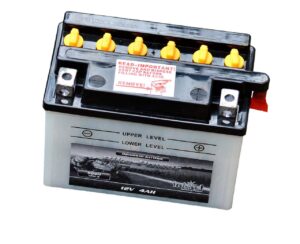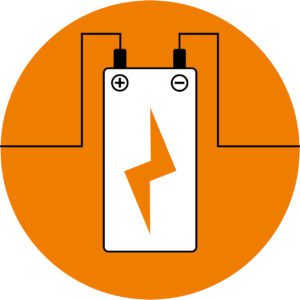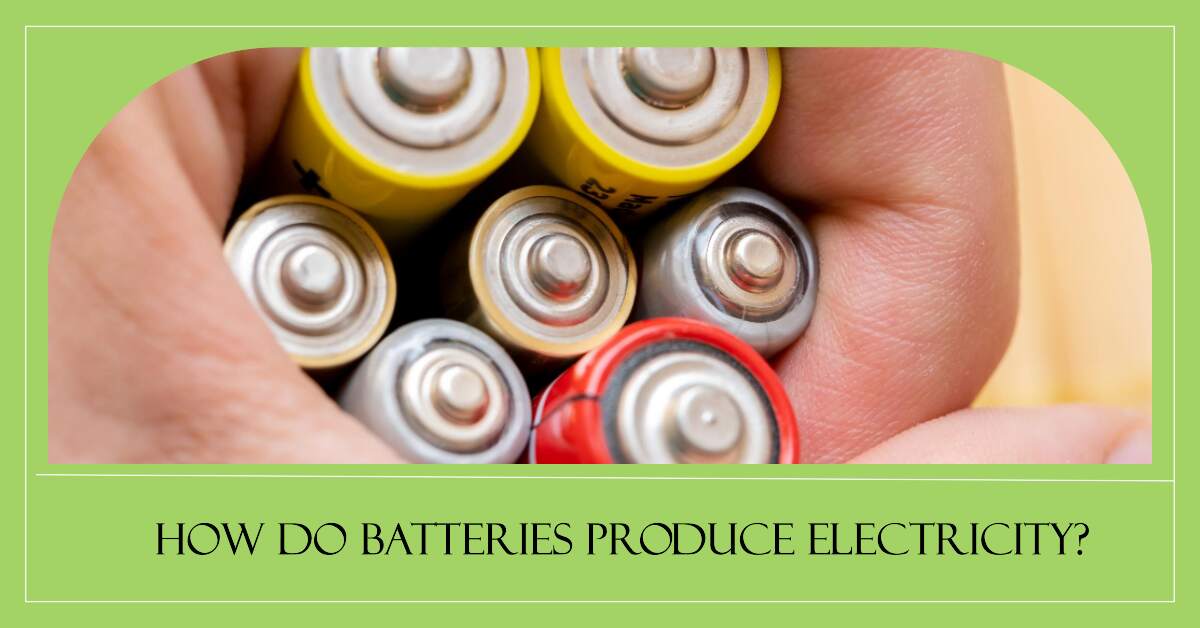Table of Contents
Have you ever wondered how the battery provides electricity to the load connected to it? If not then this blog will tell you how batteries produce electricity. Here, you will get to know about types of batteries, charging and discharging, recycling process etc.

What is the battery?
A battery is a device that is used to store energy in a chemical form and convert it into an electrical form when needed. The battery can only provide limited energy as per the storage capacity of the battery. Battery life depends on the storage capacity and demand by the load.
Components of battery
A battery is like a miniature chemical factory, consisting of three essential components:
Anode: Think of this as the battery’s negative hub, where electrons start their journey during discharge.
Cathode: On the flip side, we have the positive terminal, the cathode, where electrons eagerly find their destination during discharge.
Electrolyte: Acting as a chemical bridge, the electrolyte facilitates the smooth flow of ions between the anode and cathode.
Types of batteries
There are two types of batteries available mainly:
- Primary battery
- Secondary battery
How do Primary batteries produce electricity?
Primary batteries are non-rechargeable batteries. These are also called single-use batteries. These types of batteries have a good shelf life. Examples are zinc-carbon cells, Alkaline Batteries, and metal–air-depolarized batteries.
Alkaline Batteries: These are the most commonly used batteries found in most household gadgets. They are non-rechargeable and often come in standard sizes like AA, AAA, C, and D.
Zinc-carbon cells: Zinc-carbon cell is also called as Leclanche cells. Zinc-carbon cell consists of graphite rods inside them, which are usually covered with electrolytes that have as little moisture as possible.
Metal-air-depolarized batteries: Metal-air-depolarized batteries, often referred to simply as metal-air batteries, are a type of electrochemical energy storage device. These batteries generate electricity through a chemical reaction between a metal, typically zinc or aluminium, and oxygen from the air.
How do Secondary batteries produce electricity?
Secondary batteries are rechargeable batteries. These are also called storage batteries. In these types of cells, original chemical reactions are restored. Examples are Lithium-ion Batteries, Lead-Acid Batteries, Nickel-Cadmium (NiCd) Batteries, Nickel-Metal Hydride (NiMH) Batteries.
Lithium-ion Batteries: These are commonly used in devices like smartphones, laptops, and electric vehicles. They are rechargeable and provide a high energy density.

Lead-Acid Batteries: These are used in vehicles like cars and motorcycles. They are also found in uninterruptible power supplies (UPS) and are known for their durability.
Nickel-Cadmium (NiCd) Batteries: These are older rechargeable batteries commonly used in things like cordless phones and power tools.
Nickel-Metal Hydride (NiMH) Batteries: These are rechargeable batteries found in items like digital cameras and portable game consoles.
Sizes of Batteries
Batteries come in various sizes, each with a specific code:
- AA: These types of batteries are small in size and commonly used in remote controls and small electronics.
- AAA: These types of batteries are smaller than AA, and found in devices like TV remotes.
- C: These types of batteries are larger and often used in flashlights and toys.
- D: These types of batteries are even larger and used in items like portable radios.
- 9V: These types of batteries are Rectangular, often used in smoke detectors.
Battery Lifecycle
A battery lifecycle includes:
- Charge: When a battery is fully charged, then it stores electrical energy.
- Use: When you connect any device with the battery, the battery dissipates power in the form of electrical energy.
- Recharge: For rechargeable batteries, electrical energy is stored in the form of chemical energy when you plug them into a charger.
- Wear and Tear: Over time, batteries can wear out and hold less charge.
- End of Life: Eventually, a battery can no longer hold enough charge and needs replacement.

Battery Management System (BMS)
A Battery Management System(BMS) is a very important component in rechargeable batteries, especially lithium-ion batteries. Its main task includes:
Monitoring
To avoid overcharging or overheating, which can be hazardous, BMS monitors the battery’s voltage, temperature, and current.
Balancing
To enhance battery life, it makes sure that each cell in a multi-cell battery pack has a comparable charge.
Safety
BMS includes safety features to prevent short circuits and control the battery’s performance.
State of Charge (SoC) Estimation
It is used to measure how much charge is left in the battery, which is important for devices to display accurate battery levels.
A battery management system (BMS) always keeps your rechargeable battery safe and working efficiently over its lifespan.

Battery degradation
Battery degradation means the gradual loss of the battery’s ability to store and deliver electrical energy over a long time. This is the natural and unavoidable process that occurs in every battery whether the battery is rechargeable or not.
Causes of Battery Degradation
- Chemical Reactions: Batteries work because of the chemical reactions happening inside the battery, and over time, these reactions can alter the materials inside the battery. This can lead to a reduction in the battery’s capacity and performance.
- Cycle Count: For rechargeable batteries like lithium-ion batteries, the number of charge and discharge cycles a battery goes through can significantly impact its lifespan. Each cycle causes a slight degradation.
- Temperature: Extreme temperatures, whether too hot or too cold, can accelerate battery degradation. High temperatures can increase chemical reactions within the battery, while extreme cold can slow down battery performance.
- Overcharging and discharging: Charging a battery beyond its recommended voltage or discharging it too deeply can harm the battery and contribute to degradation.
- Age: Even if not used, a battery will degrade over time simply due to its age. The rate of degradation often increases as a battery gets older.
Signs of Battery Degradation
- Reduced Capacity: The battery holds less charge over time, resulting in shorter usage periods between charges.
- Increased Internal Resistance: As a battery degrades, its internal resistance increases, leading to reduced efficiency and slower charging.
- Decreased Performance: Batteries may not provide the same level of power output as they did when new, resulting in slower device performance.
- Shorter Lifespan: The overall lifespan of the battery may be shorter, leading to the need for more frequent replacements.
Electric field charges and static electricity
Electrostatic field is conservative or not
Frequently Asked Questions
Q.1 How to extend battery life?
There are several ways to extend the life of batteries and maximize their operating time.
1. Optimize charging habits: Avoid overcharging the battery by unplugging the device once it reaches full charge.
2. Reduce the amount of time the battery spends at high temperatures, as this can accelerate battery degradation.
3. Limit the depth of discharge by avoiding fully draining the battery before recharging it.
4. Consider using a battery management system to monitor and control battery performance.
By implementing these simple measures, you can significantly extend the life of your batteries and reduce the maintenance and replacement costs associated with battery degradation.
Q.2 What are Best practices for battery maintenance
Battery maintenance is a critical aspect of ensuring optimal performance and longevity. It involves implementing best practices that take into account various factors such as charging behavior, driving style, and temperature.
One simple measure that can significantly extend the life of a battery is to keep the level of Lithium-ion batteries above a certain threshold. This measure, as suggested in various studies, involves more frequent charging with smaller discharge amounts rather than infrequent deep discharges followed by full recharges.
